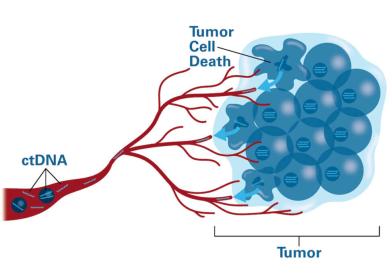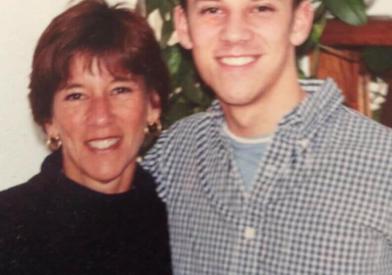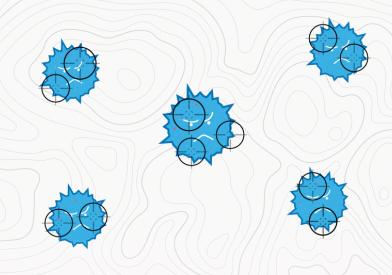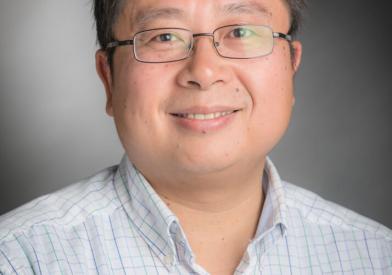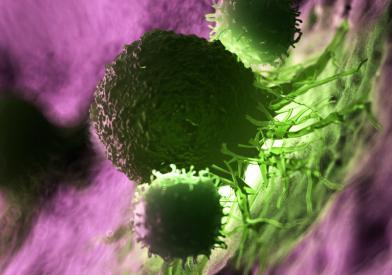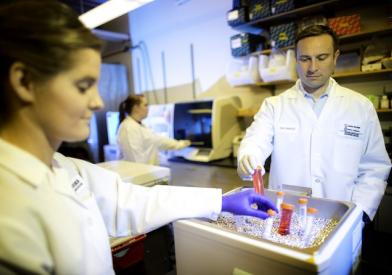What Is Rhabdomyosarcoma?
Rhabdomyosarcoma is a cancerous tumor that grows in the body's soft tissues that connect, support, or surround organs and other body structures. You will find soft tissues in the muscles that attach to bone and help the body move.
Rhabdomyosarcoma develops from rhabdomyoblast cells. These cells begin to form just weeks into the life of the developing embryo. Because this is a cancer of embryonal cells, it is much more common in children, although it can occur in adults.
- Rhabdomyosarcoma most often begins in the head, neck, bladder, vagina, arms, legs, and trunk.
- The tumor may also originate in places where skeletal muscles are absent or very small, such as the prostate, middle ear, or bile duct system.
- Although rhabdomyosarcoma is the most common childhood soft-tissue sarcoma, only about 250 children are diagnosed with this type of cancer in the United States each year.
- There are two main types of rhabdomyosarcoma:
- Embryonal rhabdomyosarcoma (ERMS): It is the most common form of rhabdomyosarcoma. It usually occurs in children under six years of age.
- Alveolar rhabdomyosarcoma (ARMS): It is found more frequently in older children and accounts for about 20 percent of all cases.
We care for children with rhabdomyosarcoma at Dana-Farber/Boston Children's Cancer and Blood Disorders Center. Our Bone and Soft Tissue Tumors Program features urology, gynecology, head and neck, and surgical specialists who treat these types of tumors in children.
Causes and Symptoms of Childhood Rhabdomyosarcoma
As a parent, you undoubtedly want to know what may have caused your child's tumor. In most cases, doctors don't know what leads to rhabdomyosarcoma. Rhabdomyosarcoma is not associated with environmental factors. There is nothing you could have done or avoided doing that would have prevented the tumor from developing.
Some rhabdomyosarcoma tumors may begin in the fetus, where rhabdomyoblast cells develop in the initial fetal development stages. These cells will mature and develop into muscles. Rhabdomyosarcomas usually have some chromosome abnormality or genetic mutation in the cells of the tumor.
Your child may not experience rhabdomyosarcoma symptoms until the tumor is very large, especially if it is located deep in the muscles or stomach.
If symptoms do appear, they may include:
- A mass that can be seen or felt and may or may not be painful
- Bleeding from the nose, vagina, rectum or throat (if the tumor is in these areas)
- Tingling, numbness or pain if the tumor compresses a nerve in the affected area
- Protrusion of the eye or drooping of the eyelid, which may indicate a tumor behind the eye
Rhabdomyosarcoma symptoms may resemble other, more common conditions or medical problems. If your child has concerning symptoms, consult your child's physician.
How We Diagnose Childhood Rhabdomyosarcoma
We use several diagnostic tests to determine the type of tumor and whether it has spread. Your child's doctor will start with a complete medical and physical examination. From there, they may also order several different tests, such as advanced imaging studies, biopsy, bone scan, and lumbar puncture.
How We Treat Childhood Rhabdomyosarcoma
Our team of highly trained specialists, including pediatric oncologists, surgeons, and radiation therapists, works closely when treating rhabdomyosarcoma in children. We determine the best treatment options based mainly on the tumor's location.
If a sarcoma in the arms or legs muscles, we typically remove it surgically and follow-up with chemotherapy and sometimes radiation. However, a tumor in the bladder or prostate requires chemotherapy before surgery or radiation. Tumors around the eye respond well to chemotherapy and radiation, so they rarely need surgery.
Your child's treatment may include:
- Surgery: Surgery is often the first step, allowing doctors to complete the tumor type and provide information on the disease stage. Complete surgical removal of rhabdomyosarcoma is usually not possible.
- Radiation therapy: This treatment can help stop the abnormal cells' growth in specific areas of the body. Radiation therapy uses high-energy rays from a specialized machine to damage or kill abnormal cells.
-
Chemotherapy: These medicines can help stop the growth of abnormal cells throughout the body. Chemotherapy is a systemic treatment, meaning it is introduced to the bloodstream and travels throughout the body to kill or slow targeted cells' growth. Different groups of chemotherapy drugs work in different ways. Patients can receive chemotherapy in various ways, including orally or intravenously.
While chemotherapy can be quite effective in treating certain cancers, the agents don't completely differentiate normal healthy cells from abnormal cells. Because of this, your child could have adverse side effects during treatment.
Children treated for cancer require ongoing, specialized cancer survivorship care to monitor late effects of treatment. Patients visit a survivorship clinic annually to manage disease complications and screen for early recurrence of cancer. Our pediatric cancer survivorship programs also include patient and family education, psychosocial assessment, genetic counseling, and opportunities to speak with other childhood cancer survivors.

